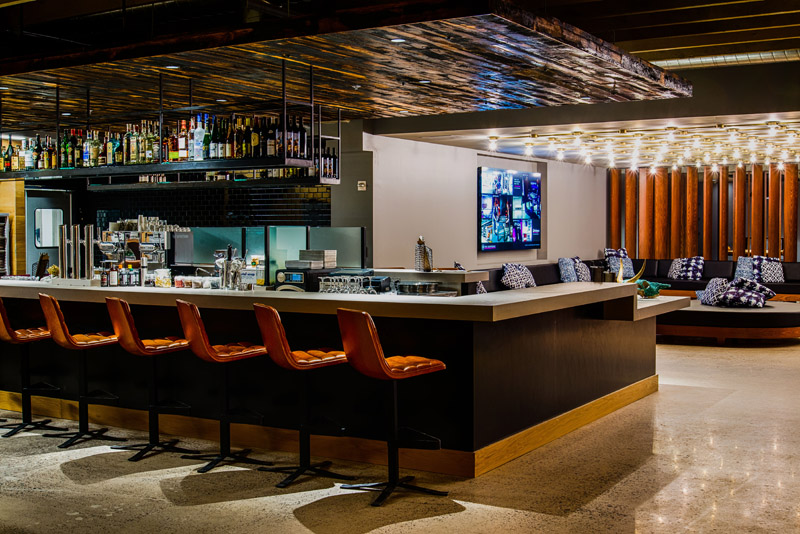For a while, it seemed as though the unthinkable could happen: The front desk, that definitive centerpiece of a hotel lobby, might disappear and be replaced with open pods or kiosks or even staff wandering around armed with tablets for checking guests in. But in spite of some lofty experiments, the front desk has survived the upheaval, albeit with some modifications. Notably, designers and hoteliers alike agreed that hotel lobbies are becoming more like residential living rooms, and front desks are adjusting to suit new tastes.
“People feel like guests, and hotels like the sense of greeting you with a front-desk experience,” said Kara Smith, president of SFA Design. Designer Lauren Rottet agreed, suggesting that the check-in pods looked even more formal in some ways than the traditional desks. Instead, she said, designers are opting for a less “imposing” desk that creates a comfortable vibe. Some desks are accessible from both the front and the back, Rottet said, allowing guests to approach it from either side. Others, in order to convey a “homey” vibe, might allow bookshelves or even refrigerators to be visible from the check-in area. “We’re making it more of a hospitality stand,” Rottet said.
Lobbies and Living Rooms
To achieve that home-like feel, Rottet said, a contemporary front desk should aim for subtlety. In a four-star property that she is designing, the wall behind the front desk has become the focal point of the lobby, while the desk itself is designed to blend in with the overall architecture. This desk is along the side of the lobby, she said, and faces a fireplace rather than the front door.
“Front-desk design is becoming more integrated with the guest experience, meaning that guests want to be welcomed into the hotel as a guest would be welcomed into someone’s home,” said Todd Garvin, director of sales and marketing at the Hyatt Regency Lexington (Ky.). The Hyatt Regency recently emerged from an extensive renovation by Moncur Design. Garvin worked closely with the design team, which opted to open up the front desk by removing the barriers between the hotel staff and the guests, blurring the lines between them.
In renovating the Viceroy L’Ermitage Beverly Hills, Smith also went for a residential feel in the lobby. “We created the front desk as an artistic, sculptural moment,” she said of the carved-stone furniture. “It’s meant to be a welcoming to the guest, and in a convenient place. We put it right as you enter.” Noting that guests at a luxury hotel often like a private check-in experience, SFA has started to put more space in between the check-in stations. “At L’Ermitage, we put them at opposite ends [of the desk],” she said. “Even if it’s just perceived privacy, it feels a little bit more like a private experience.”

At Marriott’s Moxy brand, which recently made its U.S. debut, check-in takes place at the hotel bar rather than at a traditional front desk (pictured above). “Technology is helping us take care of the ‘transactional’ part of a hotel stay in a more streamlined and seamless manner,” said Vicki Poulos, global brand director for Moxy Hotels. This brandwide design initiative was geared toward attracting millennials and changing the way guests view the first step of their stay at the hotel. “We felt there was an opportunity to play in a completely new space and launch a new disruptive hotel experience that caters to the next generation of travelers,” Poulos said
